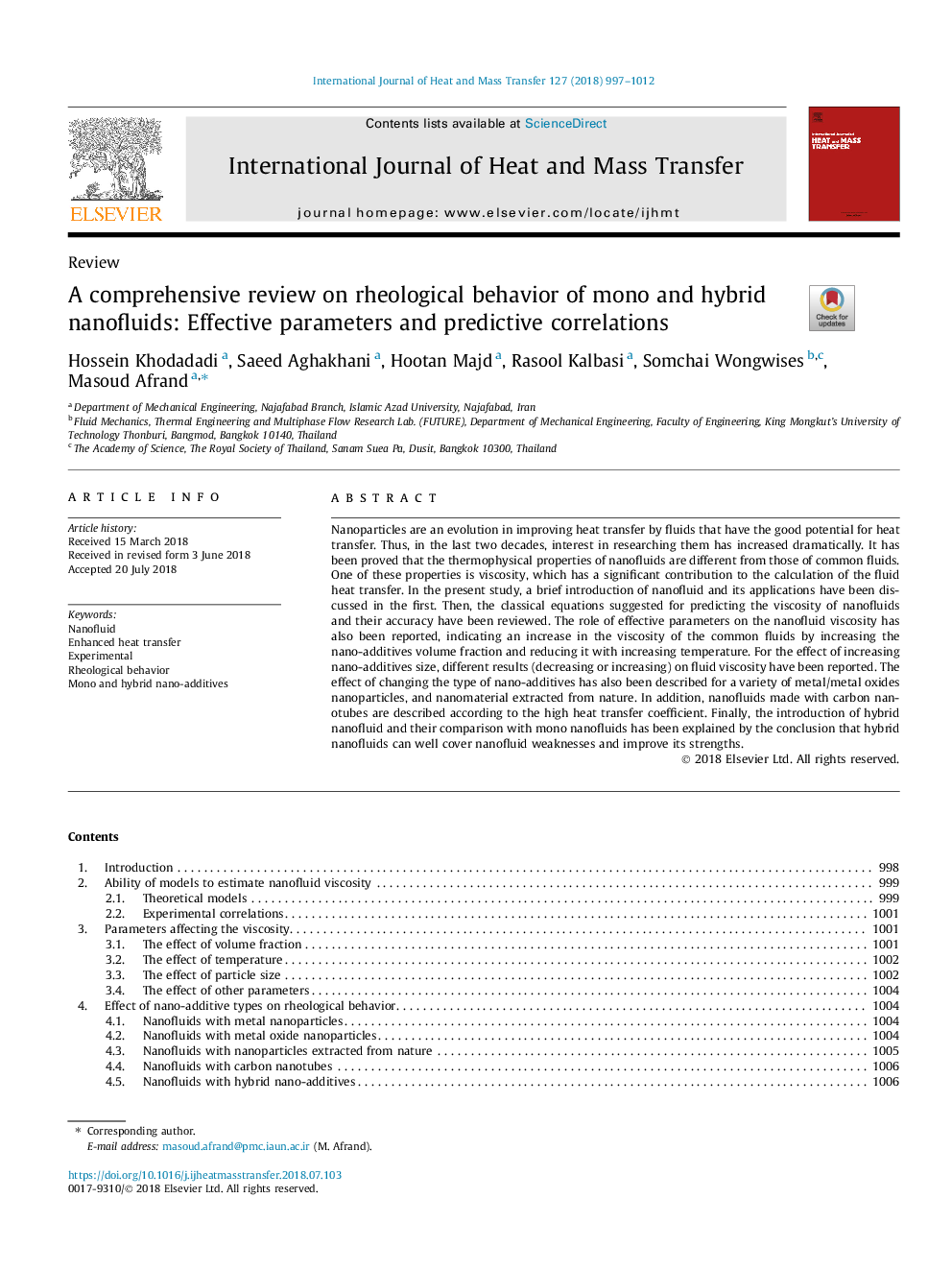| Article ID | Journal | Published Year | Pages | File Type |
|---|---|---|---|---|
| 7053644 | International Journal of Heat and Mass Transfer | 2018 | 16 Pages |
Abstract
Nanoparticles are an evolution in improving heat transfer by fluids that have the good potential for heat transfer. Thus, in the last two decades, interest in researching them has increased dramatically. It has been proved that the thermophysical properties of nanofluids are different from those of common fluids. One of these properties is viscosity, which has a significant contribution to the calculation of the fluid heat transfer. In the present study, a brief introduction of nanofluid and its applications have been discussed in the first. Then, the classical equations suggested for predicting the viscosity of nanofluids and their accuracy have been reviewed. The role of effective parameters on the nanofluid viscosity has also been reported, indicating an increase in the viscosity of the common fluids by increasing the nano-additives volume fraction and reducing it with increasing temperature. For the effect of increasing nano-additives size, different results (decreasing or increasing) on fluid viscosity have been reported. The effect of changing the type of nano-additives has also been described for a variety of metal/metal oxides nanoparticles, and nanomaterial extracted from nature. In addition, nanofluids made with carbon nanotubes are described according to the high heat transfer coefficient. Finally, the introduction of hybrid nanofluid and their comparison with mono nanofluids has been explained by the conclusion that hybrid nanofluids can well cover nanofluid weaknesses and improve its strengths.
Related Topics
Physical Sciences and Engineering
Chemical Engineering
Fluid Flow and Transfer Processes
Authors
Hossein Khodadadi, Saeed Aghakhani, Hootan Majd, Rasool Kalbasi, Somchai Wongwises, Masoud Afrand,
